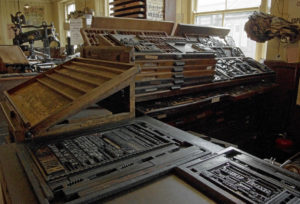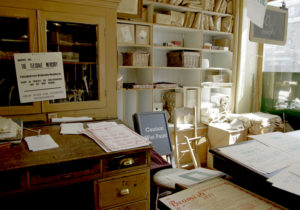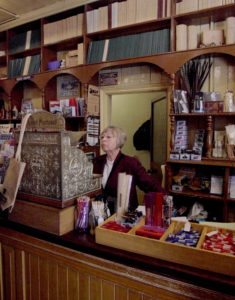Every small village had a pub and towns would have had several.The larger the town, the more pubs there were. The Sun Inn was originally a one up and down cottage, which was converted into a pub It came from Bishop Auckland and was donated to the museum by Scottish and Newcastle Breweries.
It is a typical example of a County Durham pub with front and back bars. The front bar was the public bar and was very basic with wooden floors, sawdust and spittoons. The back bar was posher (and also slightly more expensive0 and had linoleum on the floor and slightly more comfortable seats. Pubs were open from 6am – 11pm and were the preserve of the menfolk. Women did not go into the pub, although there was a hatch for sale of beer to be consumed off the premises which they could use.
The Sun Inn still serves beer to visitors as well as traditional snacks and pies.
Reached through an archway next to the pub is the stables. In the 1900s, horses were still the main method of transport and the town stables was often sited near the pub. Horses could be rested while the passengers used the pub.
As well as stabling for horses and a tack room, there was a carriage shed, with examples of the different sorts of carriages in use at that time and which would have been available for hire.
Next to the pub is the printer and stationer’s.
The print shop is on the first floor and was responsible for printing posters, bills, invoices and address cards for local businesses and locals. Newspapers would have been printed elsewhere. Most of the machinery came from a small printer’s in Barnard Castle and includes a splendid eagle press, which was state of the art printing at the time. The letters of different sizes were kept in wooden drawers and typesetting was a very skilled business and needed the ability to read back to front!
On the ground floor is the branch office of the Sunderland Daily Echo and the Northern Daily Mail. As well as selling newspapers over the counter, it also distributed newspapers to street vendors and newsagents. Staff also took orders for advertising copy as well as subscriptions.
On the other side of the doorway is a stationer’s shop. This sold all sorts of cards, writing paper, pens and inks as well as artist’s supplies, cash boxes and ledgers.
This is one of a series of detailed “reviews”:https://www.silvertraveladvisor.com/travel-product/attraction/141741-beamish-open-air-museum I have written about Beamish.
A full account with all my pictures can be read “here.”:http://wasleys.org.uk/eleanor/presocialhistory/socialhistory/social/folkmuseums/beamish/index.html










